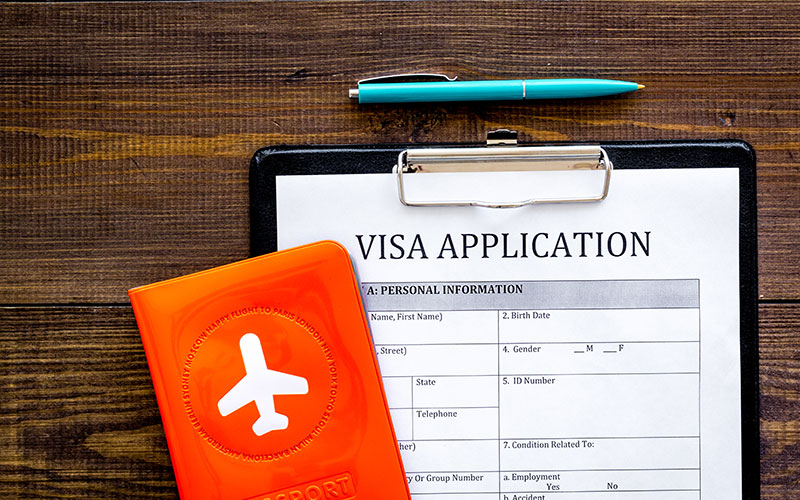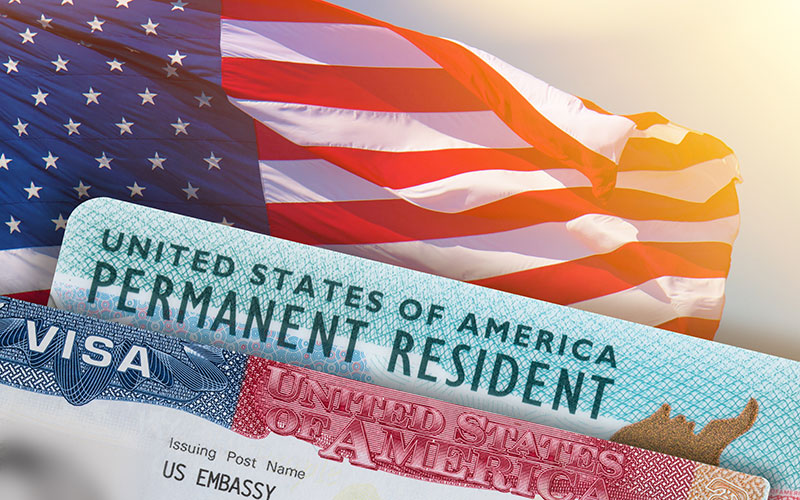Probably one of the top non-immigrant work visas allowed in the US, the H-1B visa allows US employers to employ foreign workers in special occupations. Thousands of skilled professionals apply for this visa each year, thus the H1B visa process is highly competitive. This visa program enables companies in various fields, including technology, engineering, and healthcare, to bring the best international talent to fill roles that demand advanced expertise.
The process of applying for an H-1B visa consists of several steps, from obtaining employer sponsorship to participating in the H1B visa lottery selection process. Prior to exploring the application process, we need to understand the necessity of planning a H1B visa application, considering it involves limited availability of visas for a population with exponential demand, making it very essential to be prepared for a process like a H1B visa application. Companies should be compliant with H1B visa requirements to avoid delays or denial.
What Is the H-1B Visa?
Now What is h1b visa? Well it is a non-immigrant employment-based visa that permits U.S. employers to employ foreign workers in advanced occupations. These occupations need highly specialized knowledge and a minimum of a bachelor’s degree in a relevant field. It is the process through which foreign professionals are allowed to work in the U.S. on a temporary basis for a total of up to six years (initially for three years, with another three-year extension possible if a permanent residency application is pending).
The visa program is critical for many industries that depend on trained professionals for jobs in STEM (Science, Technology, Engineering, and Mathematics) fields. Top sponsors of such workers include companies like Google, Microsoft, and Apple. As there is a cap on the available visas, the H1B visa lottery process randomly selects applications each year due to the high demand.
Eligibility and Requirements
Now, to qualify for an H-1B visa, the employer, as well as the applicant, have to fulfill certain criteria. Universities impose stringent qualification requirements, which are governed by requirements of H1B visa holders.
Employer Requirements
- The position must be a specialty occupation that requires the use of specialized knowledge.
- However, an employer is required to submit a Labor Condition Application (LCA) to the U.S. Department of Labor.
- The employer will have to pay a salary equal to or higher than the prevailing wage for the occupation.
- The company has to show that hiring the foreign worker won’t adversely affect U.S. workers.
Employee Requirements
- The applicant should have at least a U.S. bachelor’s degree or the foreign equivalent in a relevant field.
- Some professions may require previous work experience or certifications.
- The H1B visa is for the candidates who get a company/job in the U.S.
The H-1B Visa Application Process

So, here are the basic steps that the employers and employees need to follow for the application process in H1B visa.
Step 1- Labor Condition Application (LCA)
The employer shall file an LCA with the Department of Labor before filing for H-1B visa petition. It also guarantees that hiring the foreign worker will not negatively affect U.S. employees in similar roles. It also ensures the offered wage is in-line with the industry.
Step 2: Filing USCIS Form I-129
After LCA approval, the employer submits Form I-129 to USCIS. The petition is an official request for an H-1B visa, and contains evidence of the applicant’s qualifications and the nature of the job offer.
Step 3: The H-1B Lottery
There is an annual H1B visa lottery run by USCIS based on random selection of petitions due to its high demand. The standard cap is 65,000 visas a year, plus 20,000 more for applicants who have advanced degrees from U.S. universities.
Step 4: USCIS Processing
Some applications are however, advanced to the adjudication stage. USCIS will then either approve, issue a Request for Evidence, or deny the petition. If the application is approved, the employer is then sent a Notice of Approval (Form I-797).
Step 5: Get Your Visa Stamped and Enter the U.S.
The applicant then files for a US visa at a U.S. consulate or embassy, after USCIS approval. It includes an interview, fingerprinting and background checks. Once the visa is granted, the applicant can enter the U.S. and start work.
H1B Visa Processing Time and Fees
If we talk about how much is H1B visa processing time, well, it depends on the applicant, USCIS workload, and whether it is requested for premium processing. Routine processing may take a few months; premium processing provides a decision in 15 calendar days.
Potential H-1B Visa Costs- The total cost of an H-1B visa petition varies based on employer fees, legal fees and government filing fees. Employers typically cover:
- Filing fees from $460 to $1000.
- Fraud prevention fees.
- If applicable, premium processing fees.
Validity, Extensions, and Transfers
An H-1B visa is good for three years initially and can be extended for an additional three years, for a total stay of six years. Some applicants become eligible for additional extensions beyond the six years if they have started the Green Card in the USA process.
An H-1B visa holder can also change employers, but in that case, a new employer must file an H-1B transfer petition. The employee’s start date with the new employer can be as early as the date that USCIS received the transfer petition.
Pathway to a Green Card and Permanent Residency

A significant benefit of an H-1B visa is “dual intent”; this means that while on H-1B status, holders can apply for a Green Card in the USA. The employment-based green card process generally consists of:
- Employer sponsorship.
- PERM labor certification.
- I-140 (Immigrant Petition for Alien Worker) Filing
- Fill in the Form I-485 application for Adjustment of Status or the Form DS-260 for Consular Processing.
- Most H-1B visa holders will later apply for permanent residency in the EB-2 or EB-3 employment-based green card categories.
Potential Economic Effects and Debates
Today the H-1B visa program is an indispensable contributor to the U.S. economy, filling labor shortages in specific skills areas, boosting innovation, and promoting diversity. But it has come under scrutiny, especially when it comes to wage suppression and the possible dislocation of American workers.
Alternatives to the H-1B Visa
Skilled professionals have several US visa options available to them apart from H-1B:
L-1 Visa: This is used for transfer of employees within a company.
O-1 Visa: For those with extraordinary ability.
TN Visa: For professionals from Canada and Mexico under NAFTA.
E-2 Visa: It is for investors and entrepreneurs.
Knowing the variety of visa types allows foreigners to determine the best pathway to becoming a U.S. worker.
General Issues & Perspective for the Future
Availability and the H1B Visa Lottery System
The H1B visa lottery is one of the largest hurdles that applicants face. Demand for H-1B visas exceeds the supply every year. Yet with only 65,000 visas available under the regular cap and an additional 20,000 for employees with advanced degrees from U.S. universities, thousands of highly qualified applicants are simply being cut off by the lottery. Random selection process has applicants who are well qualified getting denied visas and job offers going unfulfilled. Make sure to check out US Business Visa FAQs before being part of the system.
Delays and Long Processing Time for H1B Visa
H1B visa process time depends upon many factors such as workload of USCIS, possible requests for evidence (RFEs), premium processing, and more. This can sometimes lead to great uncertainty, as standard processing times are between 3 to 8 months. An RFE can extend the process by weeks or months, if issued. Applicants often pay for premium processing to get approval in 15 days; even so, there is no guarantee of approval.
Requirements of a tougher US Visa and Compliance Burden
Since H1B is a stringent process, employers should comply with the US visa requirements, of the H1B visa. The Department of Labor (DOL) and USCIS routinely audit employers for which they pay foreign workers the prevailing wage and comply with all terms and conditions set forth in the Labor Condition Application (LCA). Penalties for violating these requirements can range from fines to disqualification from the H-1B visa program and even deportation of the employee.
H-4 Visa Dependents and Working Restrictions
H-1B visa holders’ spouses and children get H-4 dependent visas, but they can work only in limited circumstances. While some H-4 visa holders are eligible for Employment Authorization Documents (EADs), recent policy changes have created unpredictability in the application process, leaving many spouses without work authorization.
Conclusion
As a major conduit for international talent migration, the H-1B visa will be critical in providing paths for professionals as well as for U.S. enterprises to remain competitive. Although there are challenges, the process for H1B visa applications remains a channel for thousands of foreign nationals looking to work in the United States.
